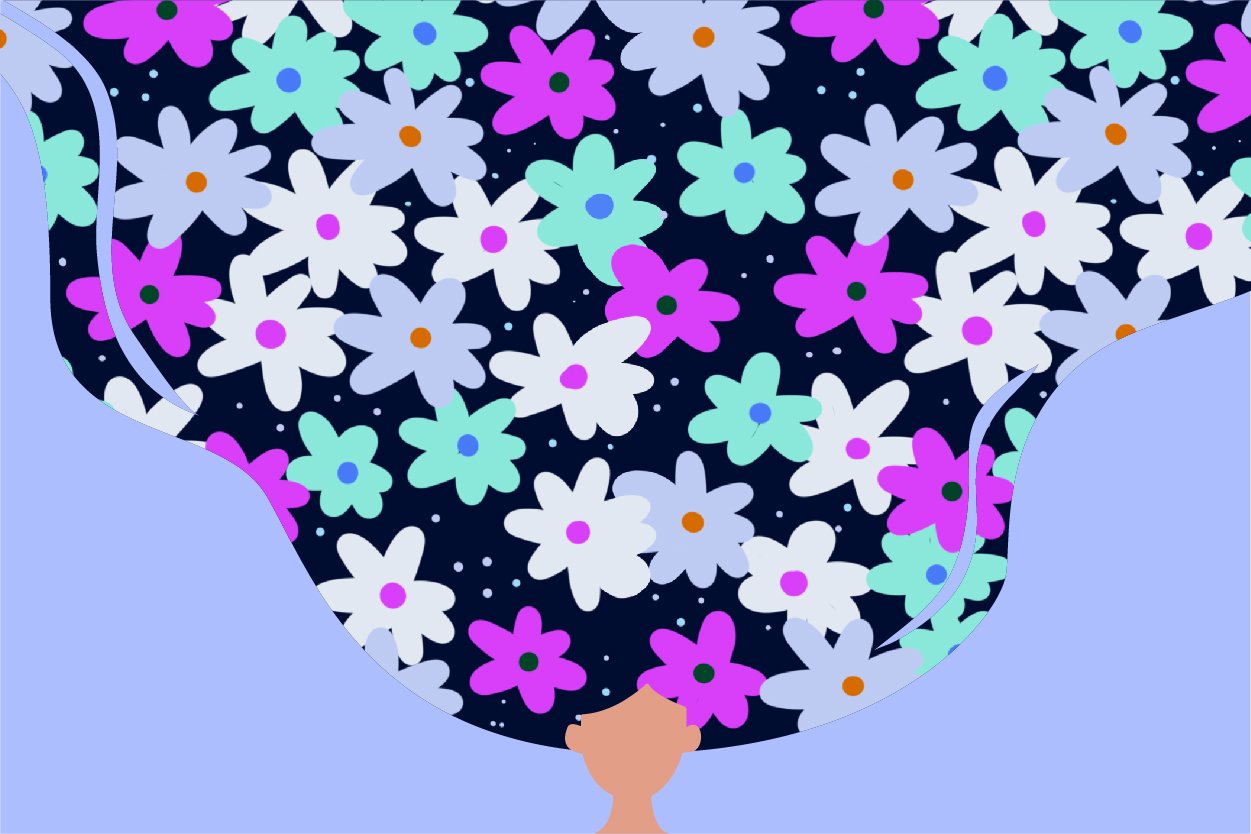Feeling stuck, or a rise of anxiousness and doubt, about the next chapter of the world, our lives, our careers, our families or anything else is a typical nervous system response to trauma. And with the past year we’ve experienced there is no doubt we all have some trauma we are dealing with.
“Our brains will stubbornly stick to the routines we’ve adopted over the last year because they have been so critical for our survival.” -Molly Colvin
Now with the surge of vaccine availability, more students returning to schools, restaurants reopening, a new president and more – it’s time to rethink how we are finding personal and professional inspiration to help us move from surviving into thriving. Using care, check-ins and the slow-and-steady approach, we can clear out some of the clutter from our brains to make space for fresh ideas, creative thinking and optimistic steps toward whatever it is we want most in this next chapter of our collective lives
Here are four ways to open the doors and turn on the porchlight to welcome your own personal and professional inspiration.

1. Quiet your mind and stretch your body
Engaging our muscles and encouraging our blood flow with new movement routines can help divert attention from the never-ending list of to-dos, worries and spinning thoughts. If you have the ability to consider a new activity or return to an old one, this is a great time to do so. And if the very thought of exercise brings up all the ugh, then consider how you might simply bring ease to your body and mind.
The mind-body benefits of yoga
Yoga is one way to awaken those parts of your spirit and thinking that have gotten very quiet in pandemic routines.
“When practiced with intention, yoga definitely helps provide clarity,” says yoga teacher Hillary Easom. “Despite its current reputation as a fitness modality, yoga is so much more than physical exercise. An asana practice helps to balance the body and, in turn, invites the mind to settle down. Conscious, regulated breathing wakes up the parasympathetic nervous system, the part that helps us relax and move away from the vigorous state of fight-or-flight that so many of us get stuck in. A skilled yoga teacher can guide a practice using gentle movements, breathing exercises and meditations that increase tone in the vagus nerve, which reduces inflammation and stress.”
You don’t have to be active on the mat or spend hours in pigeon pose to get the benefits. Easom also recommends the guided meditation practice Yoga Nidra, often called “yogic sleep,” which entirely relaxes the body and “allows inspiration and what’s really important to rise to the surface.”
“Honestly, any little bit of movement will make a difference, even if you spend just 10 minutes a day. Take some deep conscious breaths, move through a few postures and give yourself time to check-in. Don't worry so much about the length of the practice; consistency is what matters,” Easom adds.
Connect with nature for big benefits
If you are ready to explore the outdoors, science shows that connecting to nature can reduce our likelihood of developing chronic diseases and help minimize health challenges we currently have. EEG tests show that interacting with nature prompts blood flow to the amygdala so we better ward off stress and fear, and has an overall calming effect on us and our relationships.
Interacting with nature helps us ward off stress and fear, and has an overall calming effect on us. Get started with a walk around the block, have your morning coffee in the backyard or bike to errands rather than driving. If your mobility or time is limited, you might find your ahhh by bringing nature indoors with a kitchen herb garden or a few plants.
👉 Still hesitant? Listen to The 3-Day Effect, an amazing scientific and personal investigation into exactly how being outside for three days in a row changes our brains and our thinking about what we’ve been through and where we are headed.
2. Awaken your imagination and commit to your creativity
Sure, it feels great to dabble in macrame or the latest TikTok dances, but if you can commit to a daily creative practice, you will notice marked differences in how your ideas bubble up and what you can do to bring them to life.
Painter and printmaker Laurie Smithwick swears by The Artist’s Way method, and specifically, the “morning pages” practice of writing daily for 20 minutes and taking yourself on weekly artist dates.
“Morning pages means you’re there to receive inspiration whenever it strikes. Artist dates mean you’re giving time and space to your creativity,” Smithwick explains. “A morning pages entry could be a list of things you have to do, a motivational sentence written over and over, or some good reflection. Doesn’t matter. Just write every day. An artist date can be a walk in a new neighborhood, a trip to see a mural or a pebble-hunting excursion. Just be deliberate about feeding your brain once a week, using a source other than Instagram.”
If you’re having creative commitment issues, start with making a vision board and then placing it in your bathroom or above your desk, where you can spend 20 seconds focusing on it every day. Be sure to put a picture of yourself or your name at the center of the vision board as a repeated reminder that you are the beautiful, expanding, strong core of whatever big things unfold next.
3. Turn down the noise and tune in to new sounds
In Covid times with more people at home more often, schedules packed with Zoom calls and the temptation to multitask listening to podcasts while doing every household task, the volume is constantly loud in our houses and heads. It might be time to change the channel to more curative sounds.
There’s compelling evidence that sound baths and music therapy can ease anxiety, reduce physical and psychological pain and lower stress. With that let-down, we may have more emotional bandwidth and brainspace for inspiration to enter in. Give a listen to healing sound baths on YouTube. Turn on a deep-focus playlist while you work. Or press play on liminal music as a part of your bedtime routine to experience that deep work while you sleep. After a few rounds, take note if the sound experience has brought you more calm, or if you’ve emerged with ideas and openness to trying new things.
4. Connect with someone very different and ask deep, simple questions
Some of my own most electric a-ha moments have come in conversation with people who have careers, interests and experiences that do not match my own. In pre-Covid times, I’ve encountered these new friends at conferences, networking or parent gatherings or other in-person social events. Over the last year, I’ve found them in my business mastermind group, on social media or on Zoom happy hours organized by mutual acquaintances or organizations.
With the easy intention of getting to finding out more about a person, or to see life through their eyes for a bit, ask questions that will prompt them to explain more about their work, passions or perspective. I’ve found that most people are honored if you ask if they have 20 minutes (or longer!) for a virtual cup of coffee because you’d love to get to know them better.
Some questions to help get you started:
❓ What do you love most about your job? What drew you to the field? How do you overcome the daily challenges? Who or what inspires you when you draw a blank or hit a wall?
❓ Where will you travel next? What’s the best little spot you’d say I must see if I visit the last place you traveled?
❓ What’s it like to be a grandmother/ digital nomad / sole female cement worker on the entire crew / the first person in your family to opt out of college? How have you stayed true to who you are through all of that?
If it feels like too much to interview a stranger, then turn your attention to the people around you. Invite a coworker to have a virtual lunch talk, pull out Table Topics cards at dinner with kids or reach out to your more isolated older relatives who may be thrilled to chat.
In all conversations: Be an active listener. Show your respect. Write down anything that stands out. Express your thanks for sharing. Be open to connecting your own life, dreams, and ideas to what you heard.
Inspiration isn’t a destination
Every day, every practice is the opportunity to reset, to be even more open and to embrace thriving. Finding inspiration isn’t a race or a place to arrive at. It’s an ongoing adventure that should be baked into a life well-lived. And most importantly, it cannot be a box you check; it has to be something that is actually inspirational to you.
Jessica Ashley is a writer, content strategist, and coach whose life’s work (paid, unpaid, and in endless school board meetings) is focused on empowering women through tough transitions with creativity, grace and maybe some cussing.




